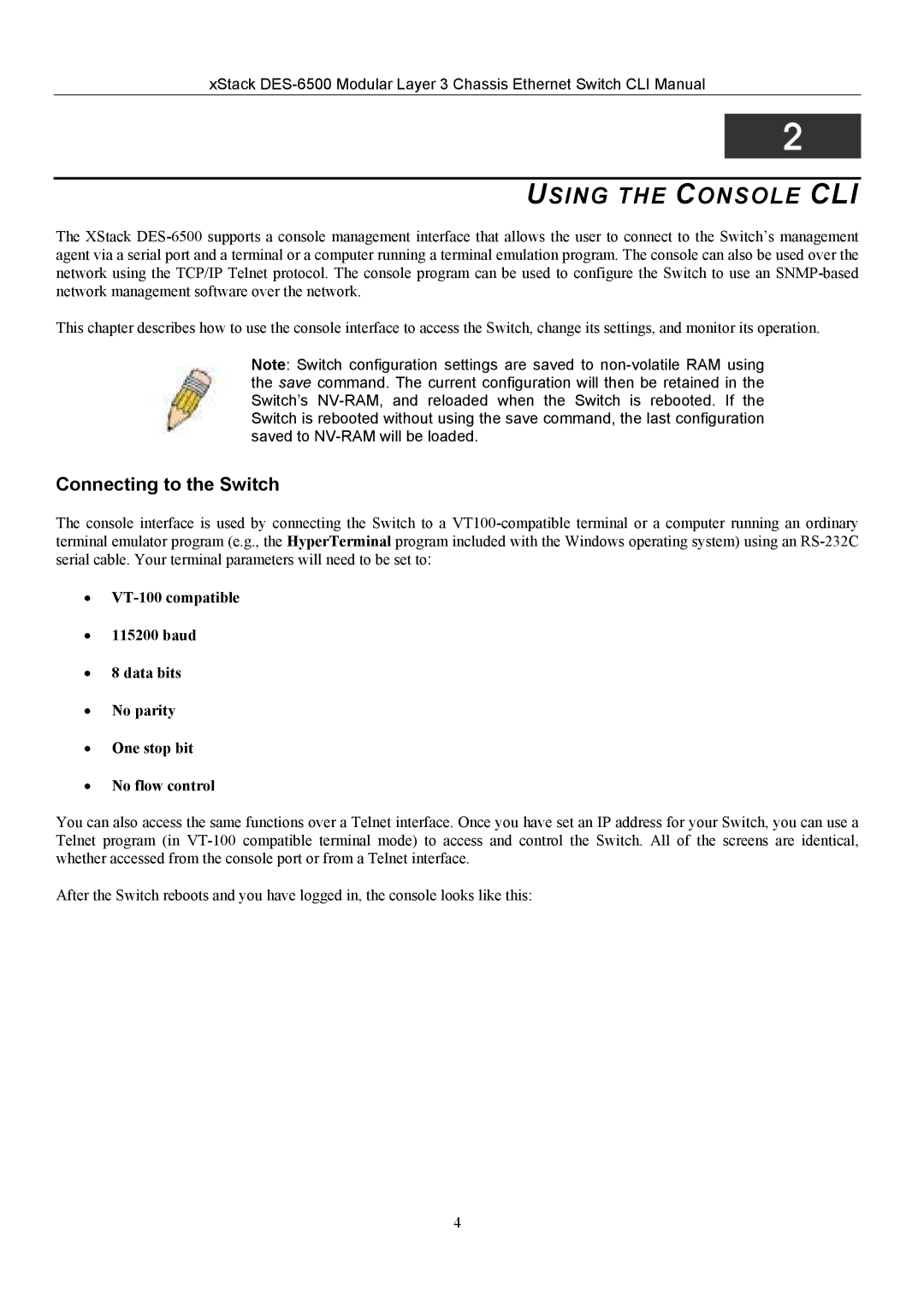
xStack
2
USING THE CONSOLE CLI
The XStack
This chapter describes how to use the console interface to access the Switch, change its settings, and monitor its operation.
Note: Switch configuration settings are saved to
Connecting to the Switch
The console interface is used by connecting the Switch to a
•
•115200 baud
•8 data bits
•No parity
•One stop bit
•No flow control
You can also access the same functions over a Telnet interface. Once you have set an IP address for your Switch, you can use a Telnet program (in
After the Switch reboots and you have logged in, the console looks like this:
4
